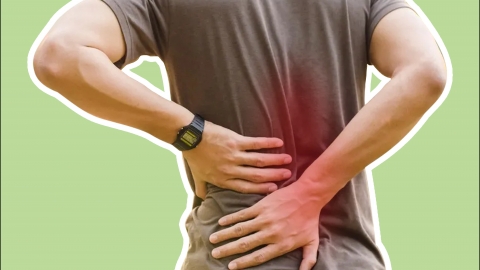What is lumbar spine rotation?
Under normal circumstances, lumbar spinal rotation may result from physiological activities, long-term poor posture, lumbar muscle strain, lumbar facet joint dysfunction, lumbar disc herniation, and other causes. It is recommended to seek medical attention promptly, identify the underlying cause, and receive symptomatic treatment under a doctor's guidance. Specific analyses are as follows:

1. Normal physiological activity: Daily movements such as turning the body or bending over to pick up objects naturally involve lumbar spine rotation, which falls within the normal range of spinal motion and meets the body’s functional needs. No special treatment is required; simply avoid sudden or forceful twisting of the lower back during daily activities.
2. Long-term poor posture: Sitting for prolonged periods with a slouched posture, supporting the body with one side only, or frequently twisting the torso while working can keep the lumbar spine in a chronically twisted state, leading to adaptive rotation. Corrective measures include improving sitting posture by keeping the back straight, standing up and moving for 5–10 minutes every hour, and performing wall-standing exercises or back and waist stretches to improve alignment.
3. Lumbar muscle strain: Chronic lumbar muscle injury caused by prolonged heavy lifting or repeated bending leads to muscular imbalance, which may pull the lumbar vertebrae into rotational misalignment. Patients may follow medical advice to use medications such as diclofenac sodium sustained-release tablets, ibuprofen sustained-release capsules, or celecoxib capsules to relieve pain.
4. Lumbar facet joint dysfunction: Sudden twisting of the waist or improper posture can displace the small facet joints of the lumbar spine, causing vertebral rotation accompanied by low back pain and restricted movement. Professional manual manipulation can help realign the joints. Additionally, patients may take medications such as eperisone hydrochloride tablets, chlorzoxazone tablets, or meloxicam tablets as directed by a physician to relieve muscle spasms and pain.
5. Lumbar disc herniation: Degeneration and protrusion of intervertebral discs compress nerve roots, triggering compensatory contraction of the lumbar muscles, which in turn pulls the spine into rotation. This condition is often associated with numbness and radiating pain in the lower limbs. Patients may take medications such as mecobalamin tablets, vitamin B1 tablets, or Yaotongning capsules under medical supervision to nourish nerves and reduce inflammation.
In daily life, avoid excessive loading on the lower back. When lifting heavy objects, maintain a straight back and use leg strength to stand up. Choose a mattress with moderate firmness to support the natural curvature of the lumbar spine. Additionally, strengthening the back and core muscles through targeted exercises can enhance spinal stability and reduce the occurrence of lumbar rotation.




